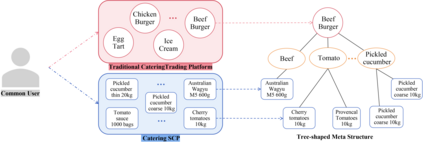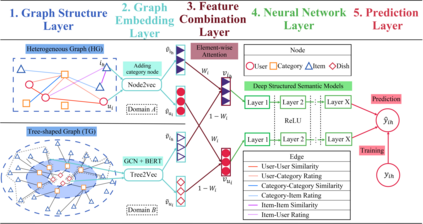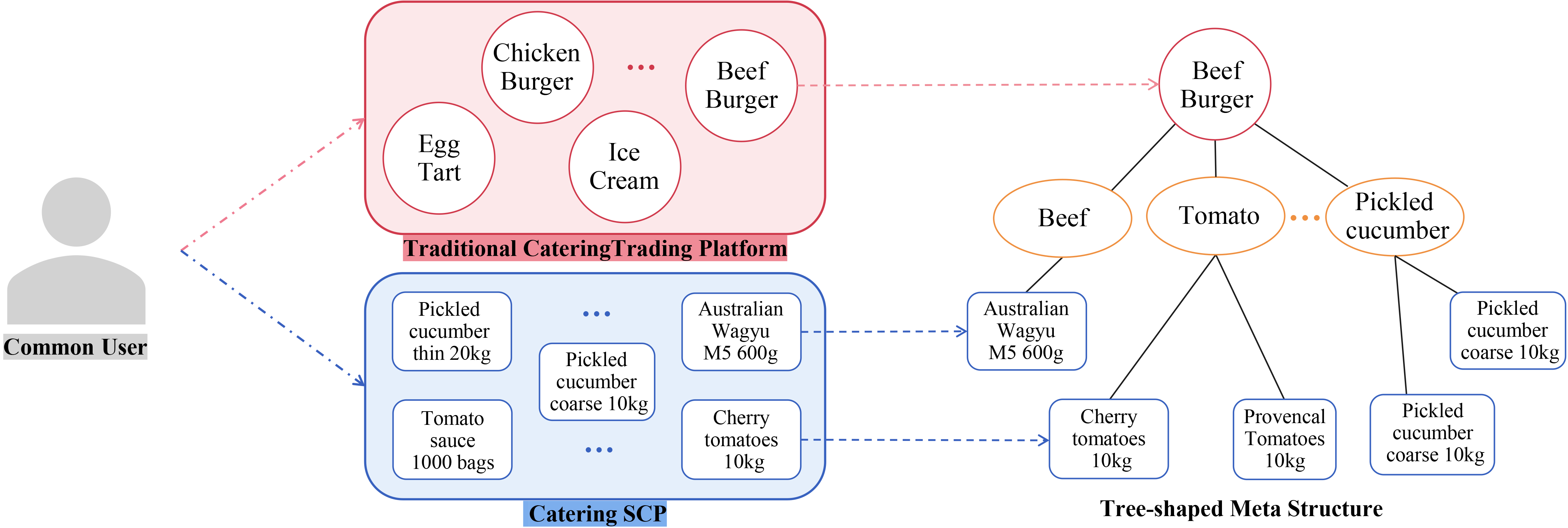Supply Chain Platforms (SCPs) provide downstream industries with numerous raw materials. Compared with traditional e-commerce platforms, data in SCPs is more sparse due to limited user interests. To tackle the data sparsity problem, one can apply Cross-Domain Recommendation (CDR) which improves the recommendation performance of the target domain with the source domain information. However, applying CDR to SCPs directly ignores the hierarchical structure of commodities in SCPs, which reduce the recommendation performance. To leverage this feature, in this paper, we take the catering platform as an example and propose GReS, a graphical cross-domain recommendation model. The model first constructs a tree-shaped graph to represent the hierarchy of different nodes of dishes and ingredients, and then applies our proposed Tree2vec method combining GCN and BERT models to embed the graph for recommendations. Experimental results on a commercial dataset show that GReS significantly outperforms state-of-the-art methods in Cross-Domain Recommendation for Supply Chain Platforms.
翻译:供应链平台为下游产业提供大量原材料。 与传统的电子商务平台相比,由于用户兴趣有限,SCP中的数据更加稀少。 为了解决数据宽度问题,人们可以应用跨域建议(CDR)来提高目标域的建议性能和源域信息。然而,将CDR应用于SCP直接忽略了SCP中商品的等级结构,这降低了建议性能。为了利用这一特点,我们在本文件中将餐饮平台作为范例,并提议GRES,即图形跨界建议模型。模型首先绘制树形图,以代表不同盘点和成份的层次,然后运用我们提议的树形图,将GCN和BERT模型结合起来,以嵌入建议性图表。商业数据集的实验结果显示,GRES大大超越了供应链平台跨域建议中的最新方法。







